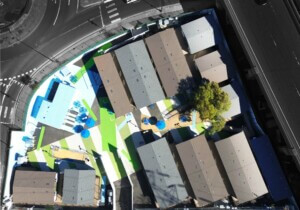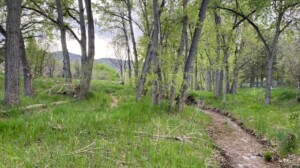Searching online for homelessness data turns up a plethora of results. This is good. It shows us that people are interested in the issue and care enough to find out more, however, it can be overwhelming. To help, Gretchen Keillor at Boston-based firm Sasaki has made a homelessness analytic tool that compiles more than 30 parameters associated with homelessness in an easy to use, easy to read format.
The visualization resource relies on data from January 2015 when volunteers nationwide counted 546,580 homeless people in the United States. It depicts homeless people as dots, coloring them using factors such as average temperature (Fahrenheit), arranging them geographically, or using other graphing methods.
Titled “Understanding Homelessness,” its biggest asset is that numerous factors can be used interchangeably, with more than three being applied at one time. For example, an arrangement of circle diagrams compares sheltered and un-sheltered accommodation while subdividing data by region. Further still, inside each circle colored segments display average temperature. Unsurprisingly, this is best explained visually (see below) and the information ultimately tells us that the majority of sheltered homeless facilities can be found in the Northeast where the average temperature is around 20 degrees Fahrenheit.
Other interesting factors include GDP per capita, unemployment rate, the amount of rain, the area’s percentage of Obama’s win in 2012, donation contributions, spending on services (such as healthcare and education), average cost of rent, access to beds, and healthcare facilities. These can all be displayed in a readable format. Some statistics correlate and some don’t, but the visualizer makes the data much easier to read.
“We didn’t want to bash people over the head with statistical figures,” said Keillor. “We wanted to present the data for people to explore themselves and lend transparency to the issue as the general average citizen makes assumptions about homeless people when they see them on the street, assuming they have a mental illness or substance abuse problem or are unemployable.” As noted by Keillor, the data presented doesn’t draw any striking conclusions or uncover any groundbreaking findings. Instead, “it just puts the data out there so people can learn about the complexity of the issue.”
Keillor, herself an urban planner and user experience designer at Sasaki, started looking for and collecting data in 2016. The year before, she had been awarded $10,000 as part of internal Sasaki research grant, given to employees that want to pursue interesting ideas. The research was conducted with help from four other colleagues (Ken Goulding, Patrick Murray, Terri Dube, and Ryan Collier) and was able to dovetail with a homelessness study by the National Recreation and Park Association (NRPA). Keillor explained: “NRPA has been a really engaged member of this discussion and has brought a really refreshing positive perspective to the issue. For parks directors, this is not their core mission to deal with the issue of homelessness but it is something they encounter on a daily basis and so are proactively looking for solutions to it.”
The work done by Keillor also helps her own firm. “As planners, urban designers, architects and landscape architects here at Sasaki, we so often design spaces that are public and that will inevitably be inhabited by this population.” Homelessness, however, is complex. Everyone has their own story as to why they have ended up on the street. Keillor acknowledged this and said that there was no “super methodological approach” for how to weave this research into Sasaki’s work, but added that the tool “has proven useful already to educate ourselves on the complexities of this issue and to share that knowledge within the firm.” That said, Keiller commented that “at the most basic level these people can’t afford places to live; from a systems perspective it is an issue of affordable housing.”
Keillor’s research does more than just visualize data, though. At the top of Understanding Homelessness’ webpage, is a tab called “strategies.” Here viewers can find ways of combating homelessness either through design (two examples include: the Sunday Breakfast Dining in Philadelphia and the Y2Y Shelter in Cambridge, Massachusetts are provided), policy, or program. An example for the latter is an individual contribution from “Haircuts for the Homeless” in London.










